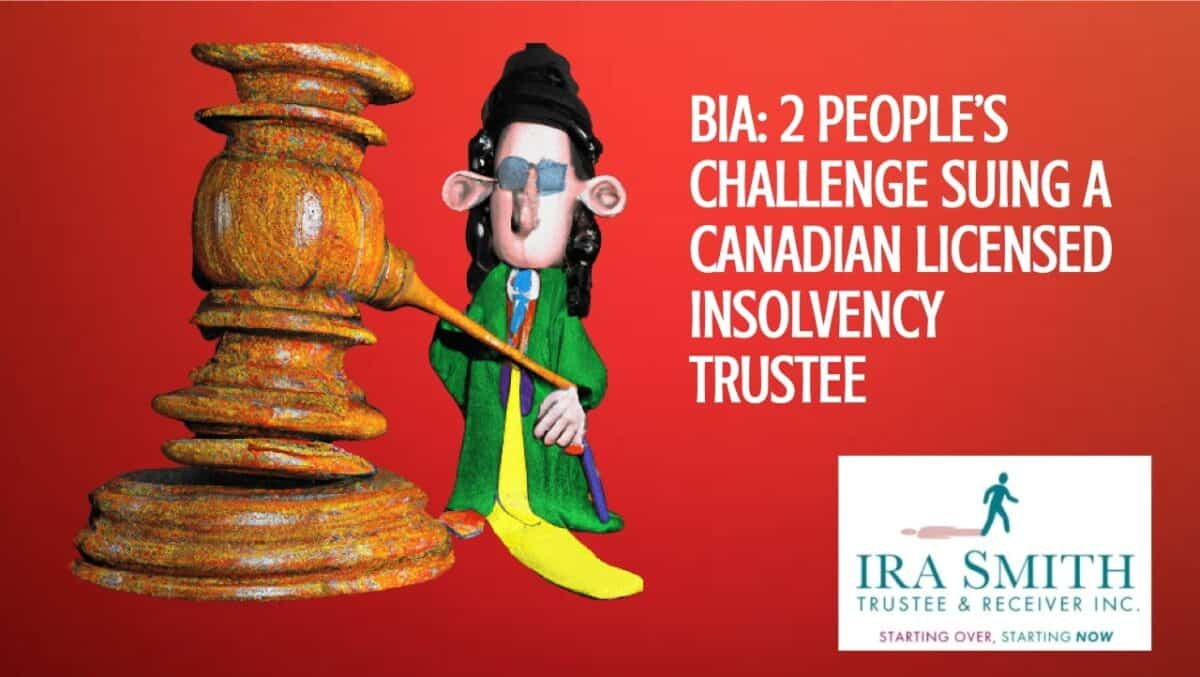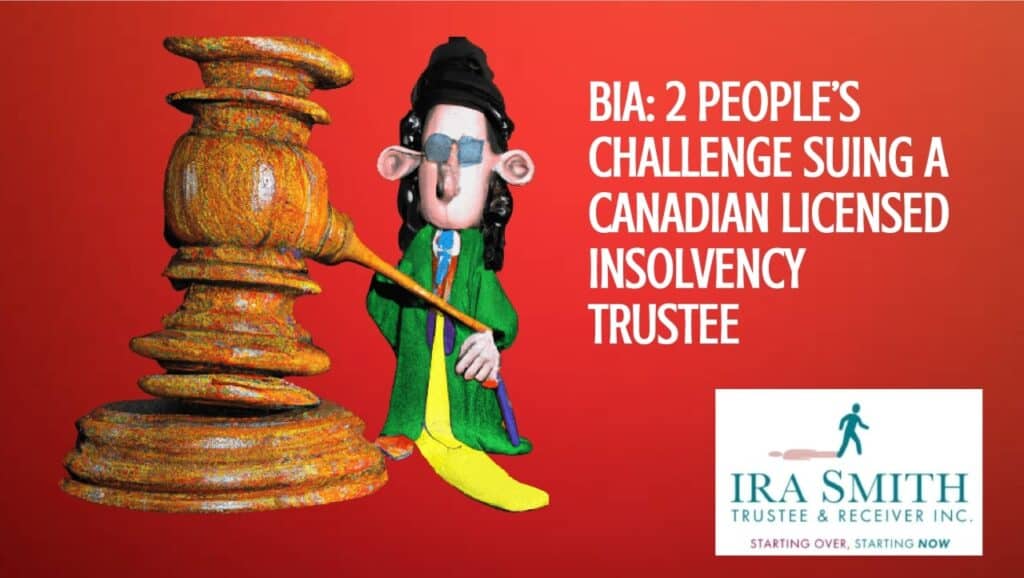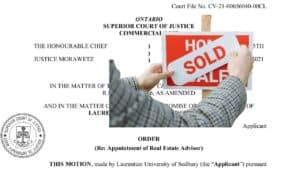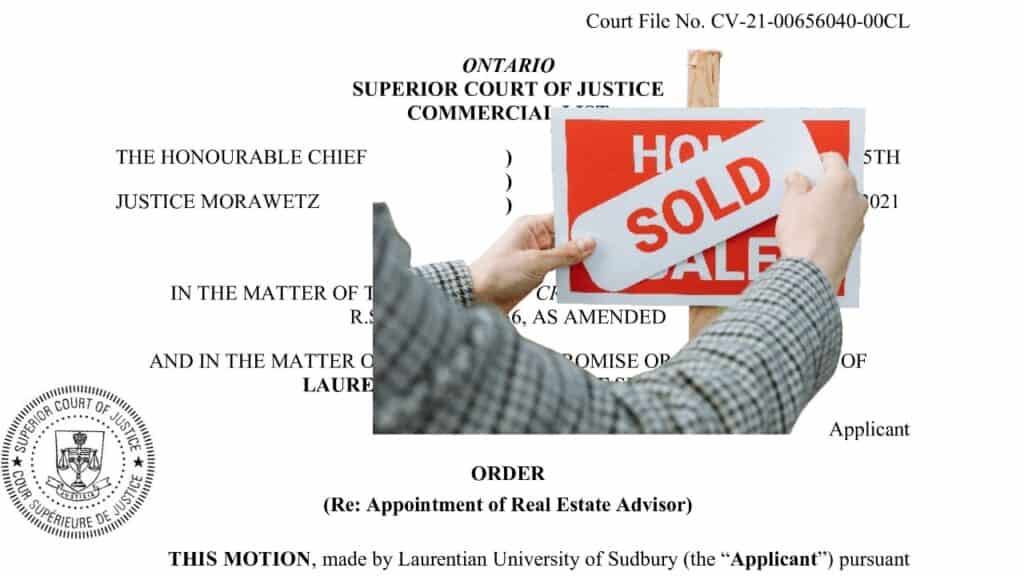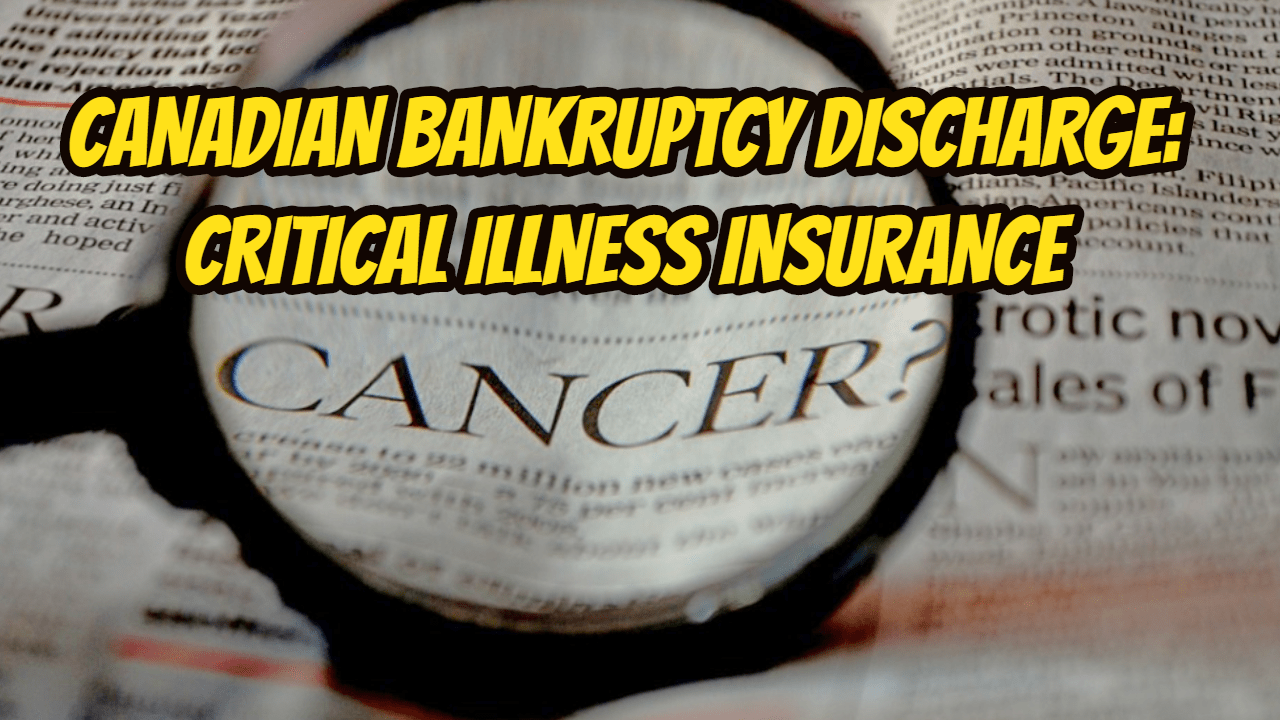This is our last blog post for 2024. We will be back with more in January. Happy Holidays and a Happy and Healthy New Year to all of our readers.
Insolvency Advisory Services: Introduction
Insolvency is a complex financial situation with significant legal and practical implications. This Brandon’s Blog post explores the key aspects of insolvency law in Canada, drawing on authoritative sources to provide a clear and informative overview.
As the pandemic-induced economic rollercoaster continues, I recently read an article in The Globe & Mail Report on Business about the world of insolvency advisory services. On the one hand, professionals like me help to fix corporate car crashes during crises, seemingly thriving off others’ misfortunes. On the other hand, our services can lead struggling businesses to a new beginning, saving jobs and families. Not just the workers or the owners, but all the businesses that rely upon that one business. Let’s dive into this fascinating landscape where financial insolvency wizardry collides with corporate despair.
What is Insolvency?
Insolvency refers to a situation in which an individual or a company is unable to fulfill their financial obligations as they become due. In Canada, the legal framework offers several mechanisms to manage insolvency, with the goal of balancing the interests of both debtors and creditors.
The Insolvency Legal Framework
Key Legislation in Canadian Insolvency Law
The Bankruptcy and Insolvency Act (BIA) serves as the fundamental legislation governing insolvency in Canada. This federal law establishes the protocols for addressing bankruptcies and proposals, ensuring a fair and systematic approach for all parties involved.
In conjunction with the BIA, the Companies’ Creditors Arrangement Act (CCAA) offers a framework specifically designed for the restructuring of insolvent corporations, particularly those with debts exceeding $5 million. Both the BIA and CCAA are administered by the Office of the Superintendent of Bankruptcy (OSB), which operates under the Department of Innovation, Science and Economic Development Canada. The OSB is essential in overseeing the insolvency process, licensing insolvency professionals, and maintaining public records related to insolvency matters.
Provincial Laws and Their Impact on Insolvency
Federal legislation primarily regulates the fundamental aspects of insolvency in Canada; however, provincial laws significantly influence this area, particularly concerning property and civil rights. Specific issues addressed by provincial legislation include:
The establishment of security interests The handling of absconding debtors Regulations surrounding bulk sales Provisions related to fraudulent conveyances
This interaction between federal and provincial laws results in a comprehensive legal framework for managing insolvency in Canada.
Roles and Responsibilities
Licensed Insolvency Trustees are licensed professionals authorized by the OSB to administer bankruptcies, handle proposals, and act as monitors or receivers. Insolvency Trustees play a pivotal role in guiding debtors and creditors through the insolvency process, ensuring compliance with legal requirements.
Access to Insolvency Information
The OSB provides a searchable database of bankruptcy and insolvency records that is available to the public for a fee. This database includes detailed information on various insolvency proceedings, such as bankruptcies, proposals, receiverships, and proceedings under the CCAA. Furthermore, the publication “Insolvency Insider Canada” offers current news and legal updates on trends related to insolvency in Canada.
Insolvency Advisory Services: The Profit Motive
Have you ever thought about how much insolvency advisers bill out per hour? The article stated that downtown Bay Street bankruptcy legal counsel and licensed insolvency trustees charge up to $1,300 per hour for their services. Are these fees justified? Or are they merely a symptom of a broken system?
Understanding Senior Claims
In insolvency cases, fees charged by advisers are classified as senior claims. This means they get paid before other creditors. When a company admits insolvency and makes a filing under either the BIA or the CCAA, these advisers work hard to navigate the complex legal landscape.
But who benefits the most? According to The Globe & Mail article:
Adviser fees have been climbing steadily over the years. While companies going through insolvency struggle with debt, they may very well be paying unnecessarily high fees.
The Financial Implications
What does this mean for businesses? When firms find themselves in the dire straits of insolvency, they owe a mountain of money. The debt piles up, and the cost of hiring pricey advisers only adds to their woes. In many cases, legal and financial advisers are feasting on the carcass of struggling companies.
The Cold Reality
This narrative reveals the harsh truth: while companies drown in debt, they may very well be paying too much for their advisers. Insolvency advisers are essential for navigating bankruptcies and restructurings, but many companies may be paying too much for the help they need. No doubt there are certain regulated industries or overly complex businesses that need the minds and skills of the downtown Bay Street advisers. But that is not the majority of Canadian businesses.
Insolvency Case Study: Do Our Fees Hold Up In Court?
We are involved in the liquidation case of two companies. Certain stakeholders, including the Estate Trustees of the Estate of a deceased shareholder, disagreed with the fees we and our legal counsel charged. A court hearing concerning our fees as a court-appointed liquidator and those of our legal counsel was held in the winding-up case.
As liquidator we sought approval for substantial fees which were challenged by the respondents, shareholders of the companies, as disproportionate to the assets involved. The judge considered various factors including the complexity of the case, the time spent, and the results achieved, ultimately approving the fees, citing prior court approvals of the liquidator’s actions and rejecting the respondents’ arguments as a collateral attack. The decision highlights the principles of fairness and reasonableness in determining court officer fees.
What factors influenced the assessment of the fairness of our liquidation fees?
The court evaluated several factors to assess the fairness of the liquidation fees charged by the Liquidator and their counsel. Ultimately, the judge ruled in our favour based on the following considerations:
- Nature, Extent, and Value of Assets: The Liquidator was responsible for liquidating two companies that presented moderately complex tax and accounting challenges.
- Complications and Challenges Encountered: The Liquidator faced numerous obstacles, including concurrent family and estate proceedings, conflicts between the Estate Trustees and another shareholder, and multiple adjournments. Additionally, delays in court proceedings instigated by the Estate Trustees contributed to increased costs.
These delays included:
- The conversion of the liquidation proceedings from voluntary to court-supervised, happened almost a year after the liquidation proceedings began.
- The proposed sale of was delayed because the Estate Trustees continued accepting new orders despite the initial agreement to not accept new orders during the voluntary liquidation. They requested time to procure an offer to sell the company.
- Further delays were caused when the Estate Trustees proposed to remove one of the companies from the liquidation but failed to do so. The Liquidator was then required to notify customers that business operations would cease once current orders were completed.
- The Estate Trustees switched counsel, which caused adjournments and increased time spent on the case.
- The degree of assistance provided by the company. The Estate Trustees were confrontational and slow to provide information, which made the Liquidator’s job more difficult.
- The time spent. The liquidation proceedings were protracted due to issues between the stakeholders.
- The Liquidator’s knowledge, experience, and skill. Both the Liquidator and its counsel were found to have significant knowledge and experience in corporate and insolvency matters.
- Diligence and thoroughness. The Liquidator produced three comprehensive reports and affidavits for the motion. Their invoices provided a clear understanding of the thoroughness of their work.
- The responsibilities assumed. The Liquidator was responsible for extensive activities, which were outlined in its reports and approved by the court. These activities included monitoring business operations, selling one of the companies’ primary assets, engaging various professionals, establishing and monitoring a claims process, and taking steps to wind down an active business.
- The results of the efforts. The Liquidator successfully converted the voluntary liquidation into a court-supervised process. They managed the companies’ finances, initiated a claims process, and made interim distributions.
- The cost of comparable services when performed prudently and economically. The rates charged by the Liquidator and its counsel were comparable to those charged by other providers in the Toronto market. Although the respondents argued that the fees were disproportionate to the value of the businesses, the court ultimately ruled that the fees were fair and reasonable given the factors outlined above.
The Mechanics of Corporate Insolvency
Understanding corporate insolvency and bankruptcy law can feel like navigating a maze. Why is there a need for specialized expertise in this field? Let’s dive into this complex world.
1. The Ins and Outs of Bankruptcy Law
Bankruptcy law is not just a set of rules; it’s a detailed framework designed to address financial distress. At the core is the legal process that aims to protect debtors while ensuring creditors get as much back as possible. This is where specialized knowledge comes in. It is critical to understand the nuances, strategies and strategizing, litigation processes, and the potential financial ramifications of each decision.
Think about it: would you trust someone who has only dabbled in the subject to handle a significant financial crisis? I wouldn’t. Expertise in this area enhances efficiency. A knowledgeable insolvency adviser can streamline the process and avoid costly missteps.
Also, this specialized knowledge often leads to reduced competition. But there are alternatives; there are experienced insolvency professionals who operate in lower-cost boutique firms like mine. Their offices may not be as fancy as the Bay Street crowd, but, what do you want to pay for. Their knowledge and expertise or their office furnishings and high rent?
2. A Day in the Life of a Licensed Insolvency Trustee Adviser
What does a licensed insolvency trustee adviser actually do day-to-day? Most of our time on corporate restructuring files involves analyzing company financials and negotiating with creditors. Navigating through heaps of paperwork is part of the gig, too. Advisors must also attend court hearings and meetings with various stakeholders, always looking to find the best possible outcome.
Typical Tasks Include:
- Drafting essential documents and filings.
- Conducting asset evaluations.
- Coordinating with legal teams and financial analysts.
On any given day, a licensed insolvency trustee adviser may switch gears between solving legal puzzles and crunching numbers. It’s a mixture of law, finance, and a bit of psychology when negotiating to save distressed businesses.
3. Key Players in Corporate Insolvency
Corporate insolvency involves several key roles, each contributing to the process in distinct ways:
- Legal Counsel: Legal professionals represent the interests of their clients and assist in navigating the complex legal landscape associated with insolvency proceedings. Court-
- Court-Appointed Receivers/Insolvency Trustees: These individuals are tasked with managing the assets of the company during the insolvency process, ensuring proper handling and distribution according to legal guidelines.
- Monitors: Monitors oversee the restructuring process to prevent the company from entering receivership or bankruptcy. They ensure that the company adheres to all legal requirements throughout the process.
Each of these roles is essential in facilitating a fair and orderly insolvency process. Together, they work towards achieving the best possible financial recovery while upholding the integrity of the legal framework.
4. Why Experience Really Matters
Experience can make or break an insolvency case. A seasoned insolvency professional will have seen various crises unfold, equipping them with the knowledge of what strategies work. They can anticipate challenges and react swiftly to changes in circumstances.
Also noteworthy is that judges usually have a high regard for seasoned practitioners. The more experienced the insolvency adviser, the more likely they will get favourable outcomes – and that’s crucial. After all, when dealing with millions on the line, would you want a novice watching your back?
Ultimately, the world of corporate insolvency is a ripe field for those with the right set of skills and experience. But remember, it’s about guiding businesses through some of the most turbulent waters they face.
The Ripple Effect of Rising Insolvency Advisories
In today’s economic climate, the rise in insolvency advisory fees is an issue that’s hard to ignore. It touches everyone – from entreprenurial businesses trying to stay afloat to investors scratching their heads over diminished returns.
Entrepreneurial Businesses and Higher Fees
As advisory fees rise, entrepreneurs are generally shut out of being able to restructure. That is one of the reasons why Ira Smith Trustee & Receiver Inc. was established. We offer the highest quality of service that rivals any Bay Street licensed insolvency trustee firm. However, due to our unique boutique formula, our hourly rates are slightly less than half of those charged by downtown Toronto Bay Street insolvency professionals.
We know that many entrepreneurs find themselves squeezed by Bay Street hourly rates, unable to afford the very advice meant to save their companies. That is why we can earn a fair return for our services in running our insolvency advisory business, without killing off the company we are trying to save because of higher fees. Downtown firms don’t think we can, but with the combined experience of Ira and Brandon Smith totalling over 60 years, we know how to and have done complex corporate restructuring. We are also one of those experienced seasoned firms that judges recognize as such. Our clients also give us 5-star reviews!
The Role of Insolvency Advisers
Despite the high costs, insolvency advisers play a crucial role in reviving struggling companies. When firms like Groupe Dynamite sought protection during tough times, savvy advisers helped them navigate those murky waters. Their expertise can mean the difference between a successful turnaround and a grim closure.
Lending and Creditworthiness
But there’s a catch. Rising advisory fees may also undermine a company’s creditworthiness. Imagine a lender reviewing a firm burdened by steep fees. They might hesitate, fearing that funds directed to advisers are funds that won’t go toward debt repayment. Essentially, high fees could close the door on future lending.
Myths Surrounding Formal Insolvency Proceedings
It is essential to clarify some misconceptions regarding the beneficiaries of formal insolvency proceedings. A common belief is that companies undergoing restructuring are guaranteed to be saved; however, this is not always the reality. Once advisers get to work, there are situations where we realize that most of the company isn’t salvageable. This emphasizes the importance of critically assessing the situation as quickly as possible so that unnecessary steps are not taken using up scarce resources.
In certain cases, such as that of Groupe Dynamite case, advisers have successfully revitalized struggling brands. Conversely, there are situations where advisers do earn fees from a business that ultimately cannot be sustained. Therefore, an effective insolvency assessment must identify these challenges from the outset in every case. It is crucial to ensure that a successful restructuring does not come at the expense of overwhelming financial burdens.
A candid and transparent dialogue between the insolvency advisor and company management is necessary before initiating any restructuring efforts. This collaboration is vital for determining the viability of the company and the best course of action moving forward.
The Ethical Dilemma In Insolvency Advisory
Navigating the complexities of insolvency involves not only strategic calculations but also significant ethical considerations. A critical question arises: at what point does one profit from another’s misfortune? The high fees charged by downtown Toronto Bay Street insolvency advisers, which can exceed $1,300 per hour, certainly prompts the question. This raises an important discussion about whether these professionals are genuinely aiding in recovery or merely capitalizing on the difficulties faced by their clients.
Insolvency advisory fees are typically structured to be front-loaded, meaning that the initial phases of an insolvency case require significantly more effort from advisers. This is necessary as they work to thoroughly understand the various issues at hand. Consequently, the execution of the devised strategy tends to be less intensive than its formulation.
This structure can exacerbate the financial strain on already struggling businesses, leading to concerns about the fairness of such practices. Therefore, transparency regarding fees is not merely a preferable quality but an essential component of ethical practice in insolvency advisory. Business owners deserve clarity to make informed decisions during challenging times.
Finding Balance
Achieving a balance between risk and reward is essential for long-term success in business. While it can be tempting to chase higher gains, it’s important to carefully consider the potential consequences. Understanding the balance between your business’s viability and the associated advisory fees is key to making informed decisions.
As we navigate the challenges ahead, let’s stay vigilant and compassionate, ensuring we take care of our businesses and those who support us in maintaining them.
I encourage you to take a moment to reflect on these points and prepare not just for success, but for stability in the ever-changing marketplace. Together, we can build a resilient foundation for the future.
Insolvency in Canada: FAQs
1. What is insolvency and how does it impact businesses in Canada?
Insolvency happens when an individual or a company is unable to fulfill their financial obligations when they are due. This situation can have important legal and practical implications, and it is guided by a detailed set of federal and provincial laws in Canada. For businesses facing insolvency, there are several potential outcomes, such as increasing debt, legal actions from creditors, and the possibility of closure. However, it’s important to remember that there are options available to help navigate this challenging situation, and seeking advice from financial professionals can be a valuable step forward.
2. What key legislation governs insolvency in Canada?
The BIA serves as the primary federal legislation governing bankruptcies and proposals in Canada. It establishes a structured process to protect the interests of all parties involved in insolvency proceedings. In contrast, the CCAA is specifically designed for the restructuring of insolvent corporations, with debts that exceed $5 million. Additionally, provincial laws contribute to the framework surrounding bankruptcy, particularly in matters related to property rights and fraudulent conveyances.
3. What role do Licensed Insolvency Trustees play in insolvency proceedings?
Licensed Insolvency Trustees are professionals authorized by the OSB to oversee bankruptcy proceedings, manage proposals, and act as receivers or monitors. Their responsibilities include offering guidance to both debtors and creditors throughout the legal processes, ensuring compliance with applicable regulations, and working to balance the interests of all parties involved.
4. Why are insolvency advisory fees considered a concern, especially for entrepreneurial smaller businesses?
Insolvency advisory services, though crucial in navigating complex legal and financial landscapes, often come with high hourly rates. This can be a significant burden for struggling businesses, particularly smaller enterprises, as these fees are prioritized as senior claims, meaning they are paid before other creditors. Some argue that these fees add to the financial strain and may not always guarantee a successful recovery.
5. What are some alternatives to high-priced Bay Street insolvency firms?
While large Bay Street firms dominate the insolvency landscape, boutique firms like ours offer comparable expertise and experience at lower hourly rates. Smaller Firms like ours prioritize practical solutions and cost-effectiveness, all delivered with a large dose of empathy. This makes us a viable alternative for businesses seeking quality advice without exorbitant fees.
6. How can businesses prepare for potential insolvency and mitigate risks?
Organizations can effectively mitigate the risks associated with insolvency by prioritizing strong financial management practices. This entails diligent monitoring of cash flow, diversifying revenue sources, maintaining adequate reserves, and establishing a contingency plan to address potential financial challenges. Timely identification of warning signs, along with seeking guidance from qualified professionals, can greatly enhance the likelihood of recovery.
7. What ethical considerations arise in the field of insolvency advisory services?
The power dynamics and the potential for substantial fees in insolvency advisory raise significant ethical considerations regarding the profit derived from a company’s financial difficulties. It is crucial to ensure transparency in fee structures and demonstrate a sincere commitment to prioritizing the client’s best interests over the pursuit of maximum profit. Such practices are essential for upholding ethical standards within the industry.
Insolvency Conclusion: Navigating the Stormy Waters Ahead
As I reflect on the unpredictability of the business world, it strikes me how everything can change in an instant. What appears stable today can be rocky tomorrow. We’ve seen thriving companies face insolvency as consumer habits shift overnight. There are many such examples. They soared high, only to crash due to rising interest rates impacting consumer spending. It’s a stark reminder that no one is immune to the tides of economic downturn.
For business owners, the key is preparation. Have you considered what your plans are if faced with potential insolvency? It’s essential to develop mitigation strategies. Keeping an eye on cash flow, diversifying income streams, and maintaining a strong financial buffer can save a business from downfall. By creating a robust financial foundation, we can cushion ourselves against unforeseen storms.
I hope you enjoyed this insolvency Brandon’s Blog. Do you or your company have too much debt? Are you or your company in need of financial restructuring? The financial restructuring process is complex. The Ira Smith Team understands how to do a complex restructuring. However, more importantly, we understand the needs of the entrepreneur or someone with too much personal debt.
You are worried because you are facing significant financial challenges. It is not your fault that you are in this situation. You have been only shown the old ways that do not work anymore. The Ira Smith Team uses new modern ways to get you out of your debt troubles while avoiding the bankruptcy process. We can get you debt relief freedom using processes that are a bankruptcy alternative.
The stress placed upon you is huge. We understand your pain points. We look at your entire situation and devise a strategy that is as unique as you and your problems; financial and emotional. The way we take the load off of your shoulders and devise a plan, we know that we can help you.
We know that people facing financial problems need a realistic lifeline. There is no “one solution fits all” approach with the Ira Smith Team.
That is why we can develop a restructuring process as unique as the financial problems and pain you are facing. If any of this sounds familiar to you and you are serious about finding a solution, contact the Ira Smith Trustee & Receiver Inc. team today.
Call us now for a free consultation. We will get you or your company back on the road to healthy stress-free operations and recover from the pain points in your life, Starting Over, Starting Now.
The information provided in this Brandon’s Blog is intended for educational purposes only. It is not intended to constitute legal, financial, or professional advice. Readers are encouraged to seek professional advice regarding their specific situations. The content of this Brandon’s Blog should not be relied upon as a substitute for professional guidance or consultation. The author, Ira Smith Trustee & Receiver Inc. as well as any contributors to this Brandon’s Blog, do not assume any liability for any loss or damage resulting from reliance on the information provided herein.





